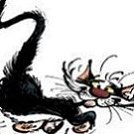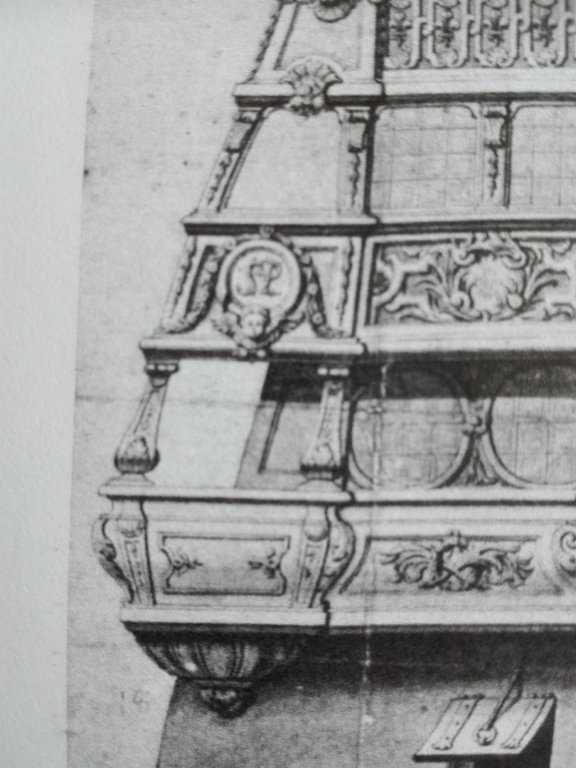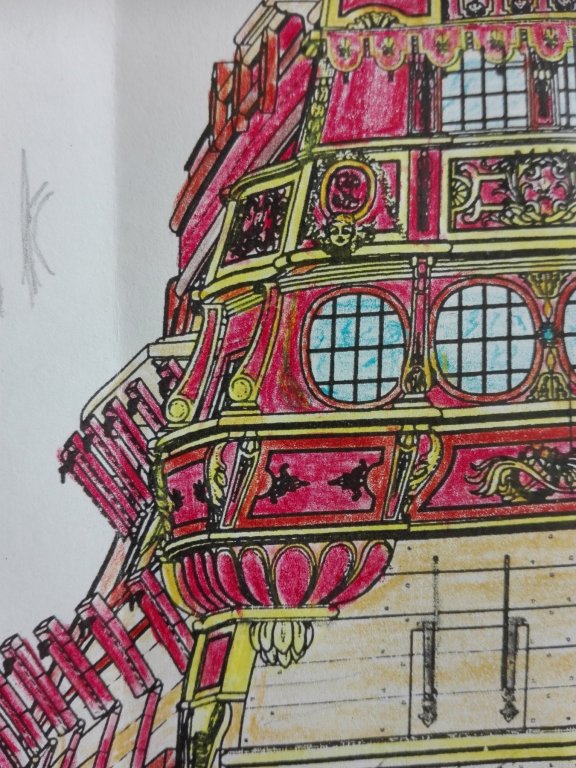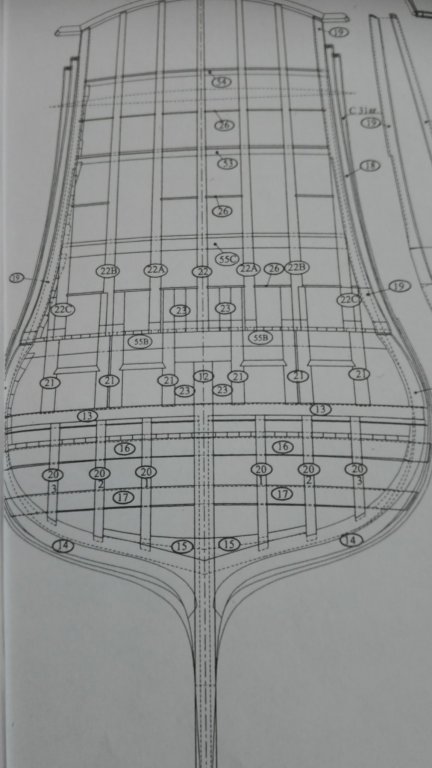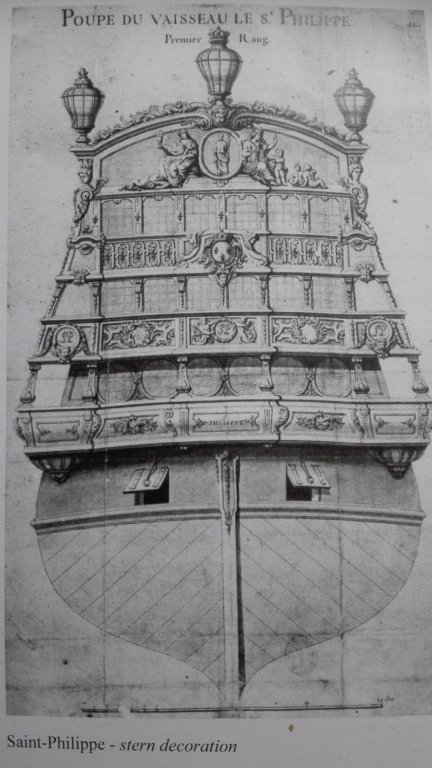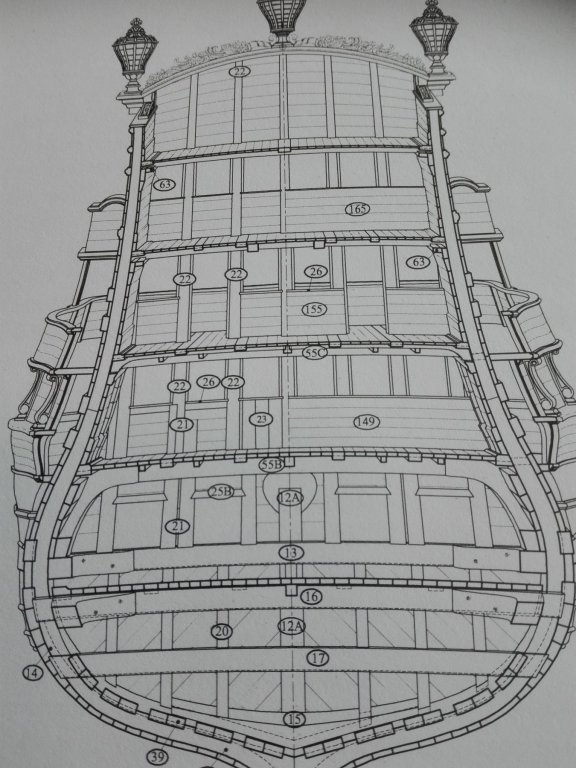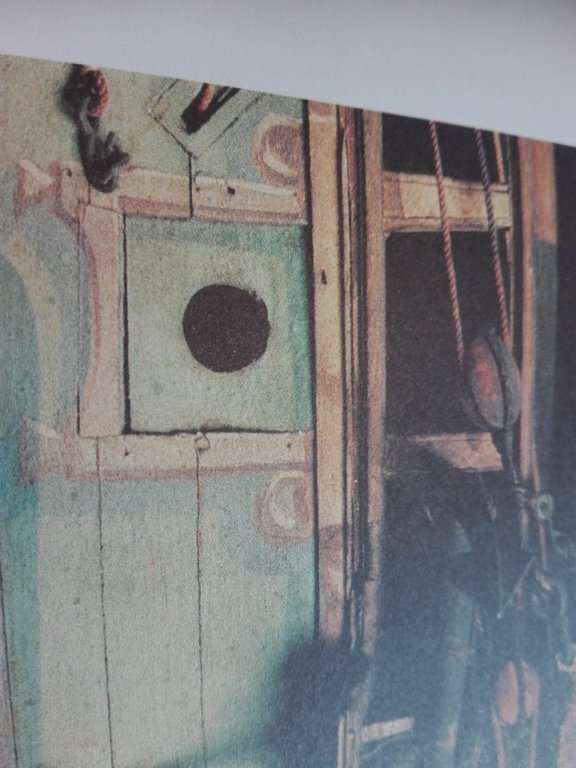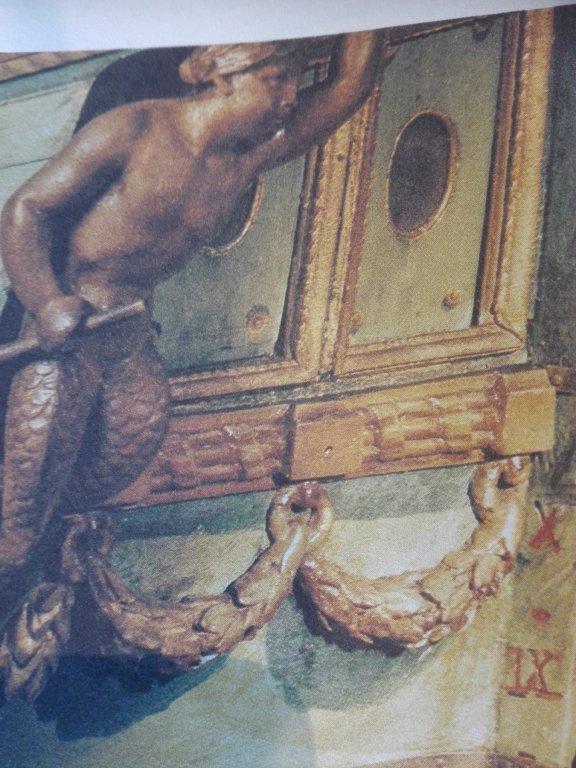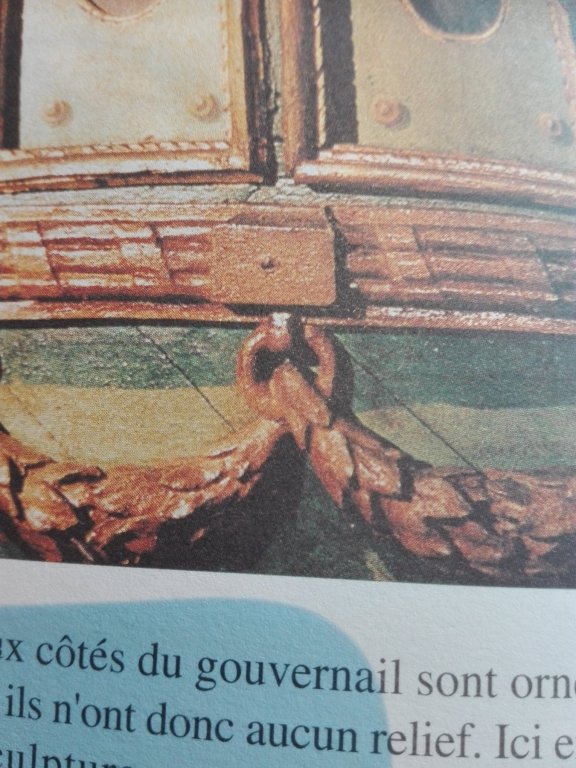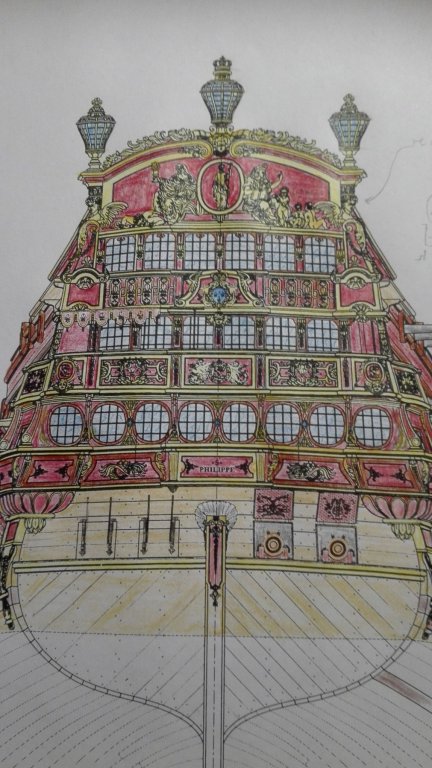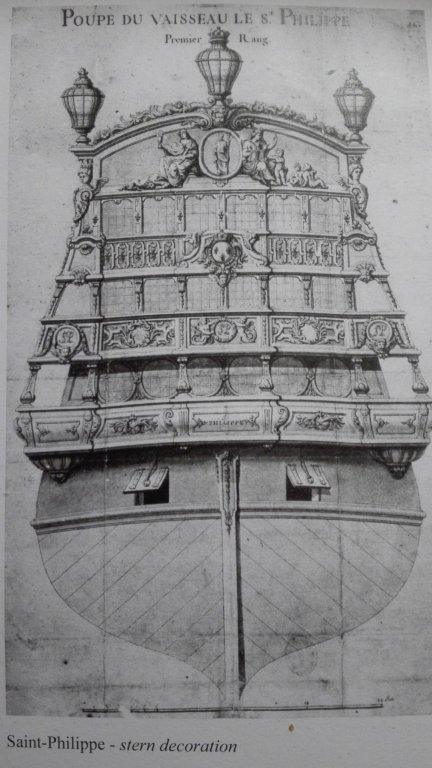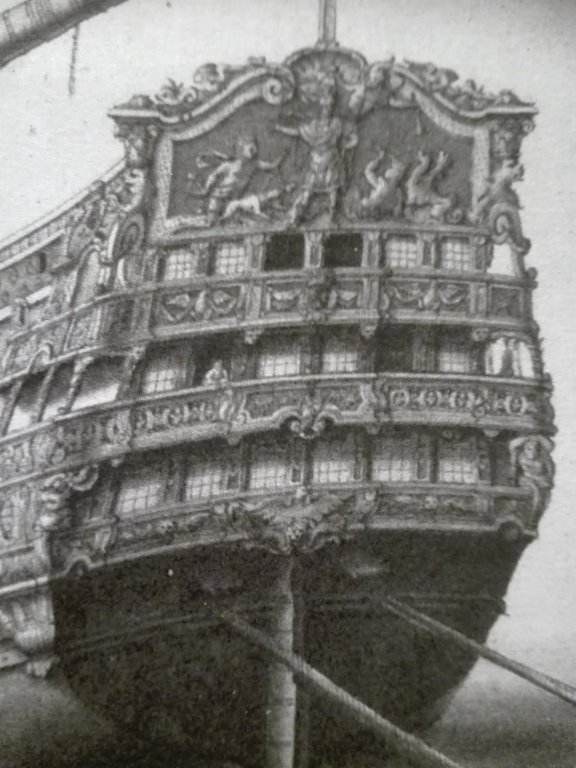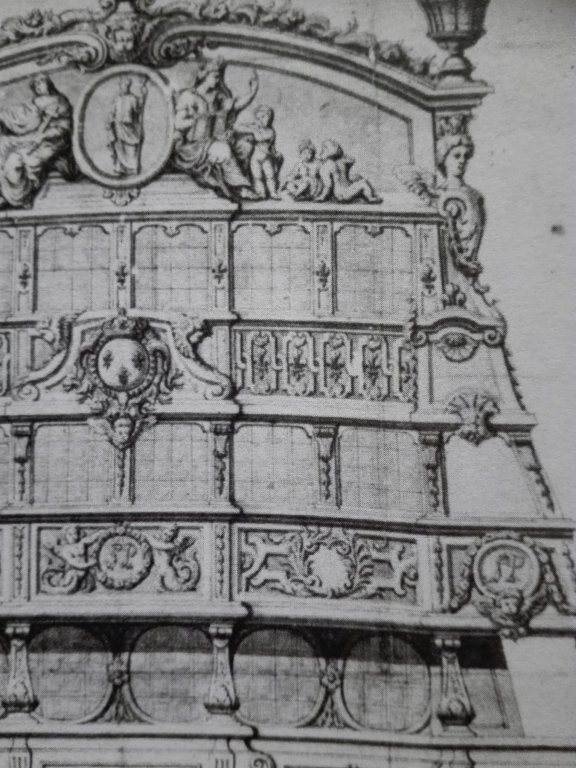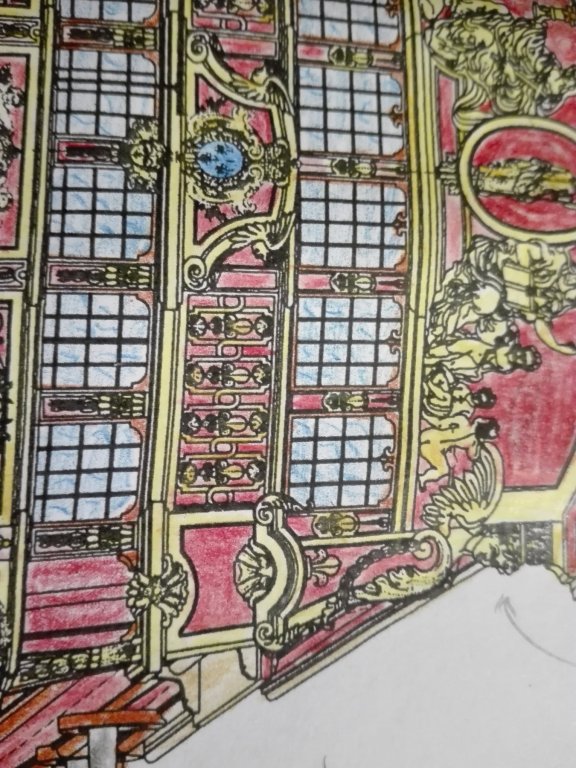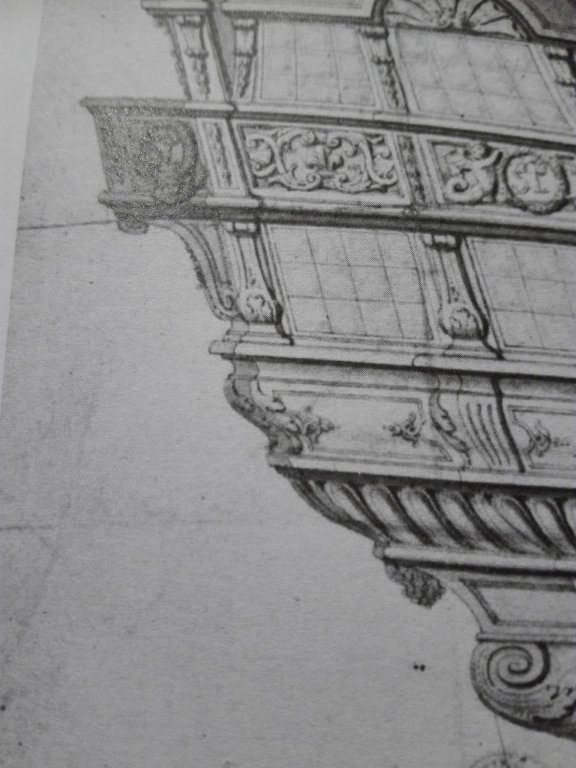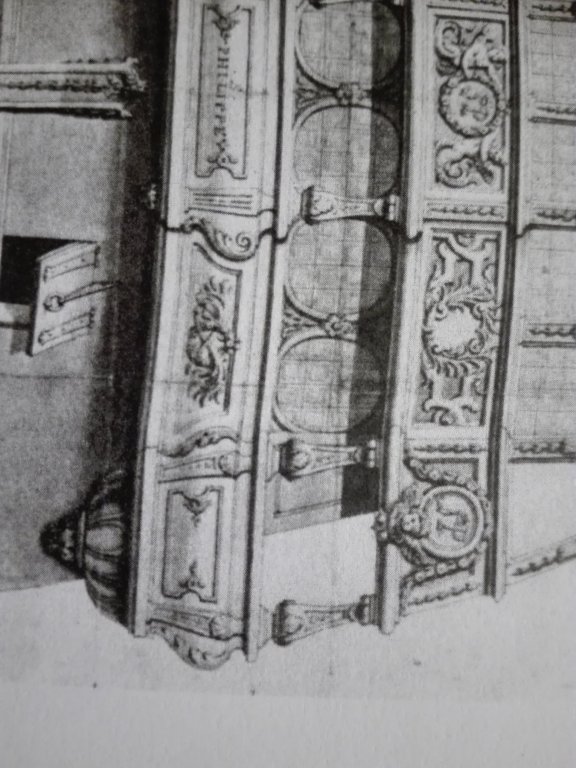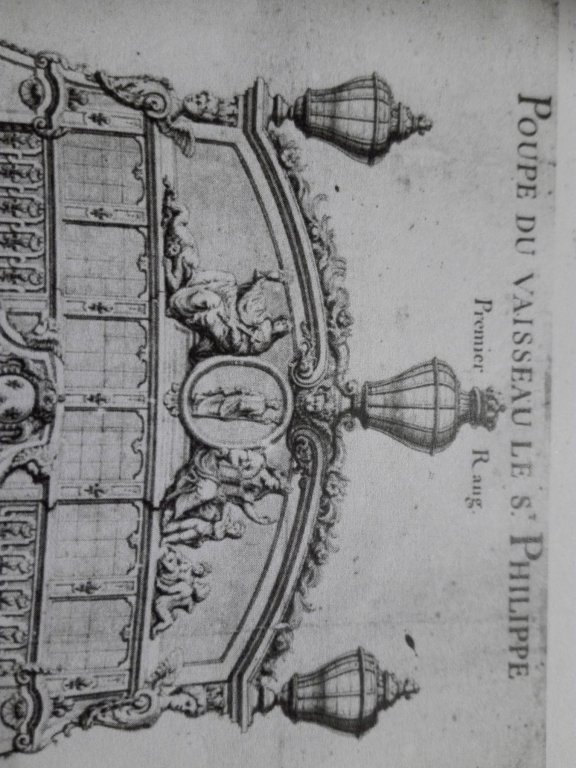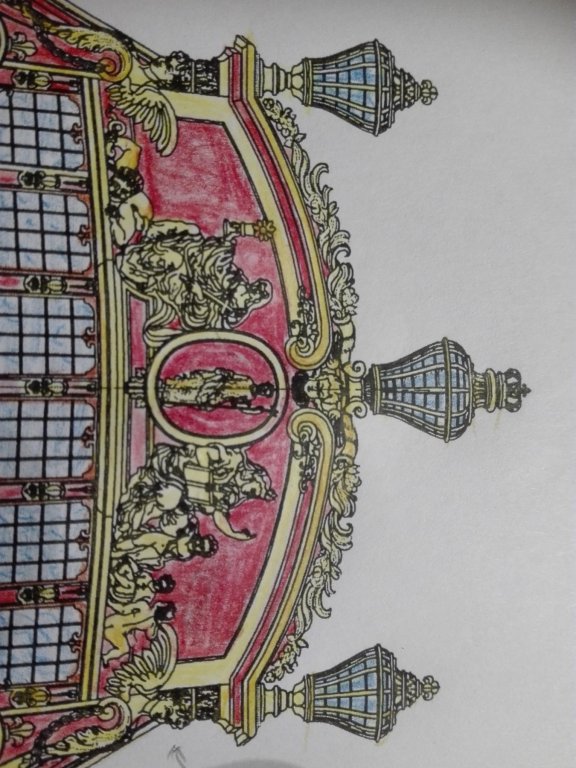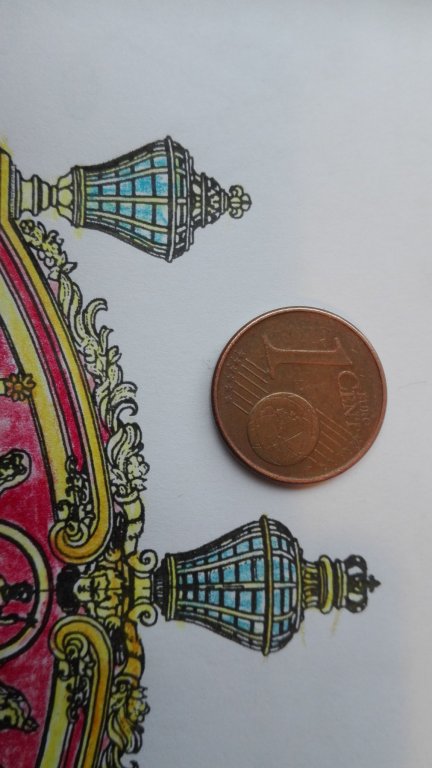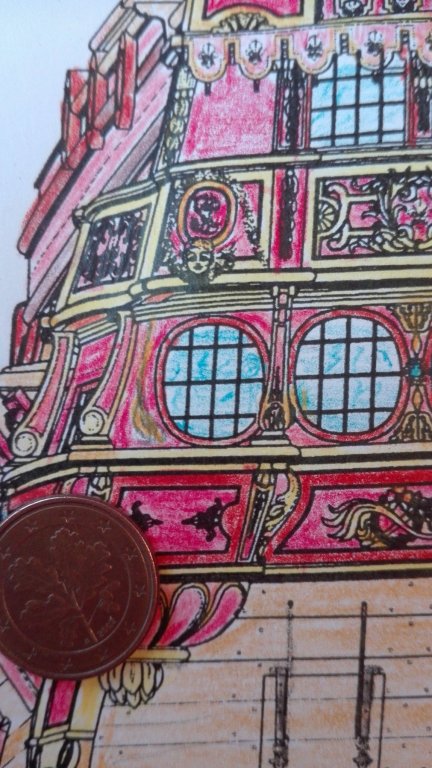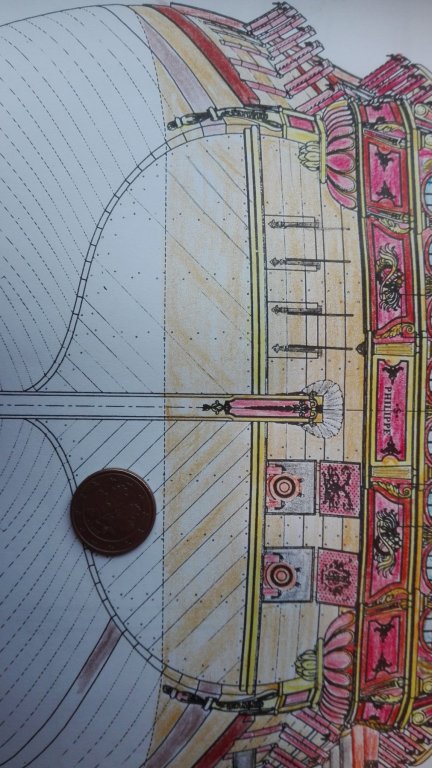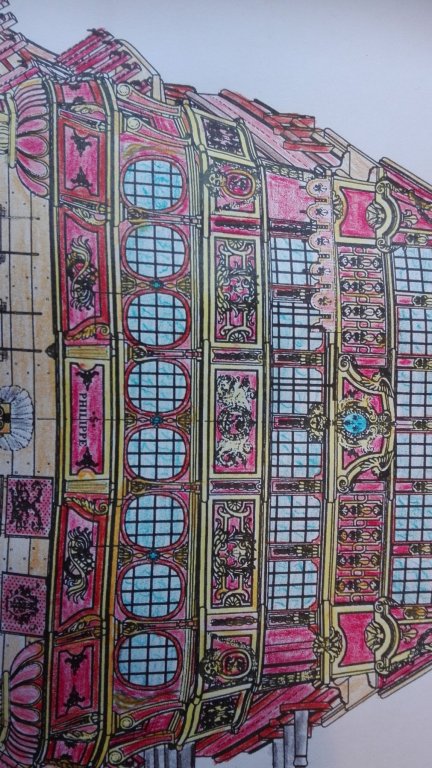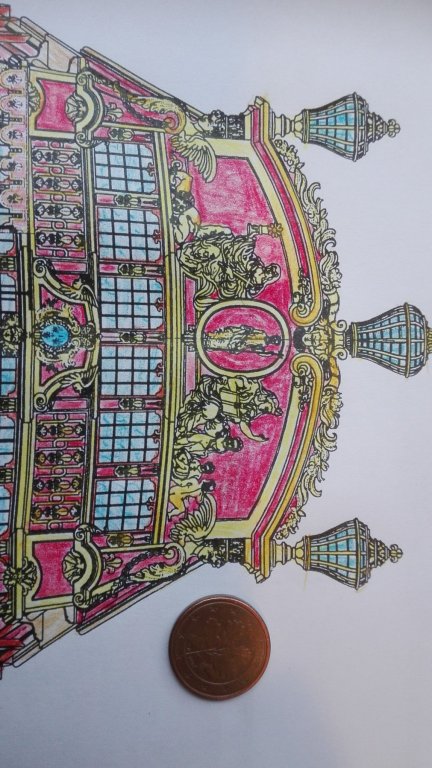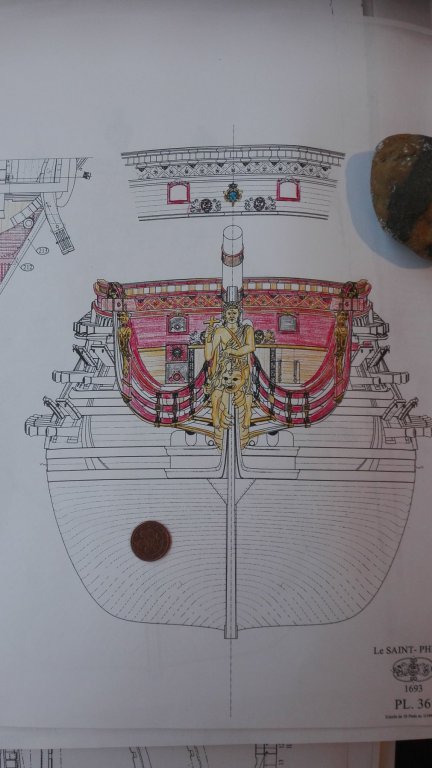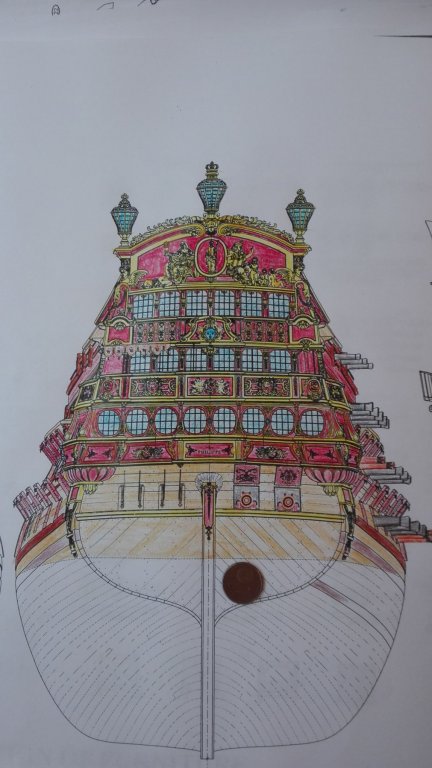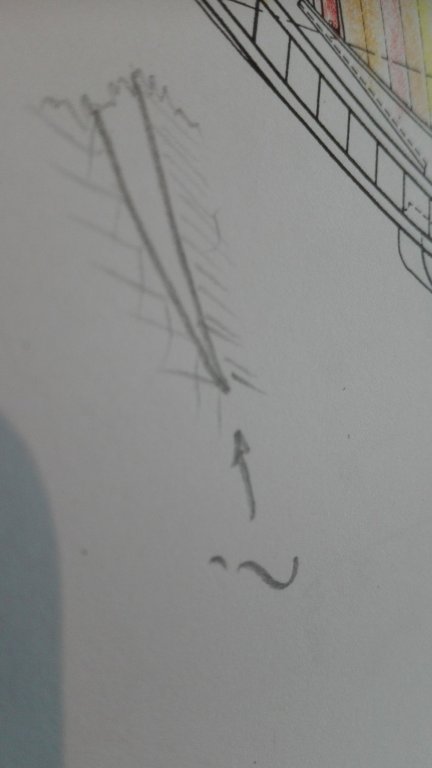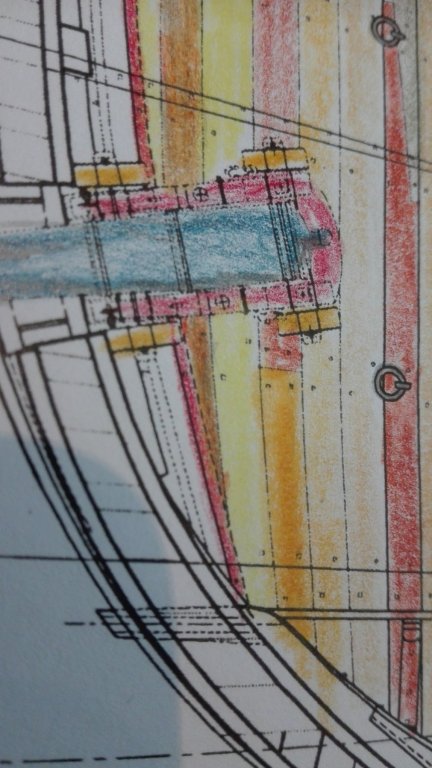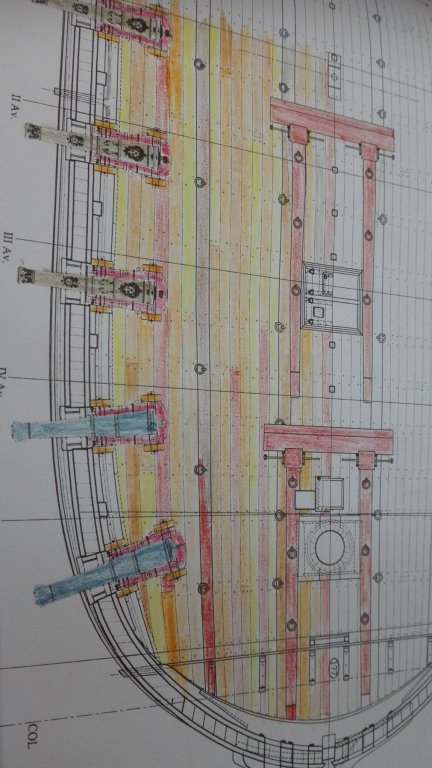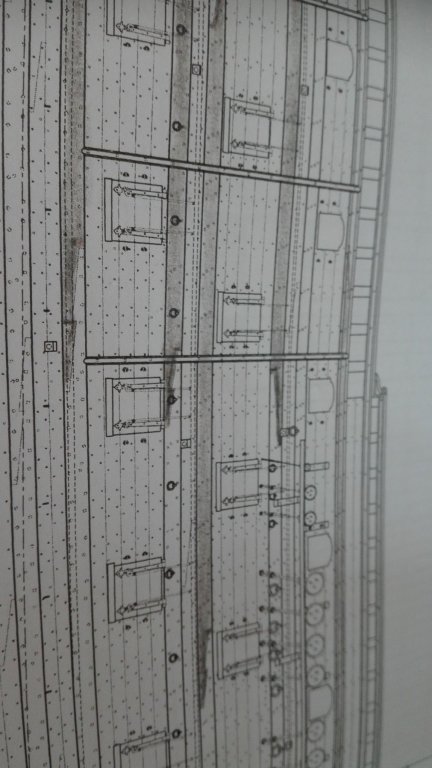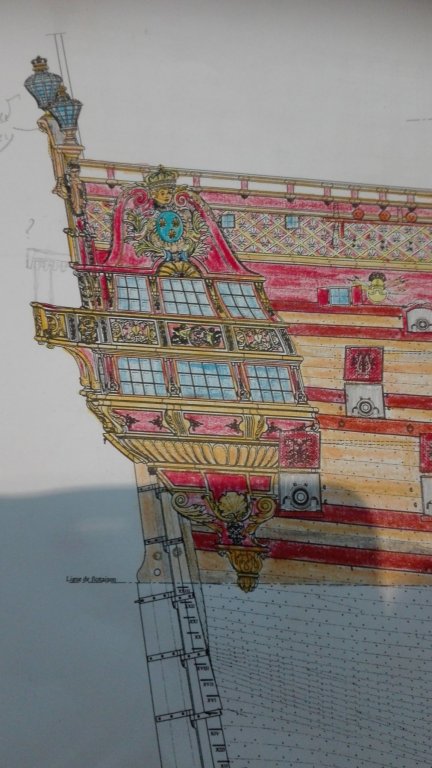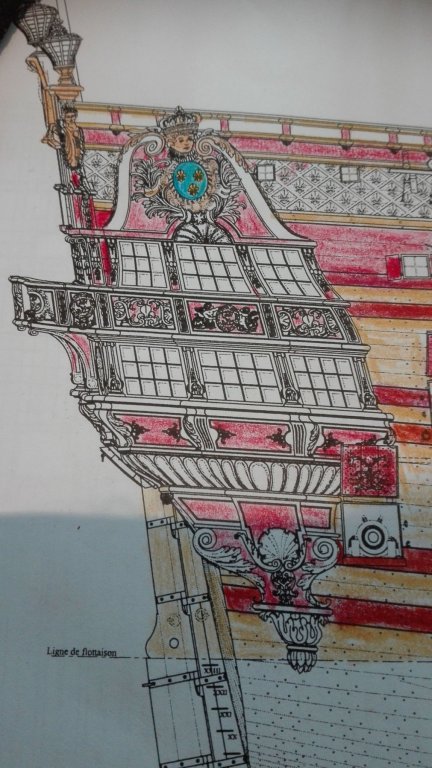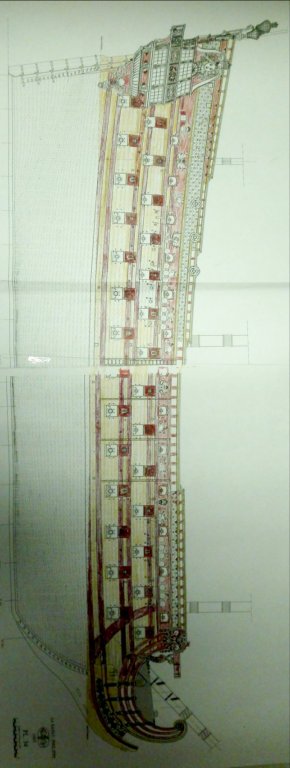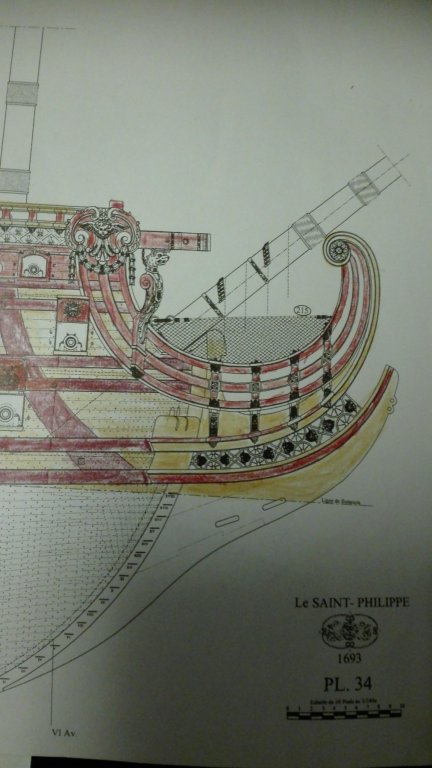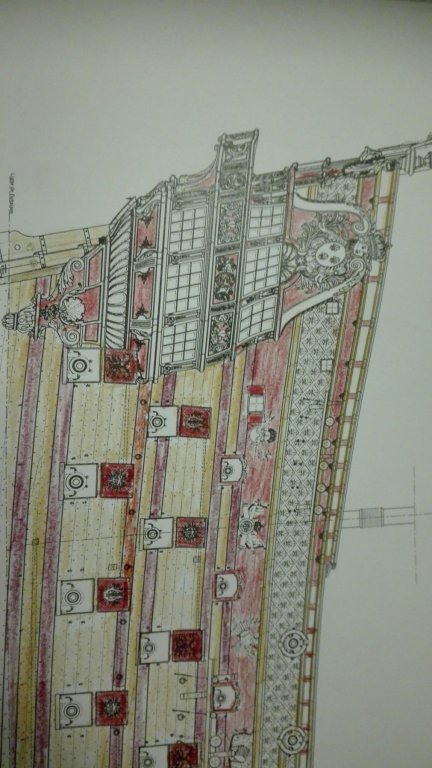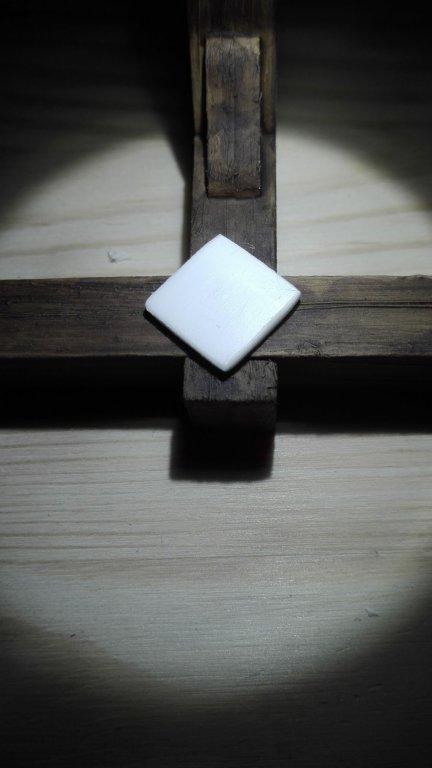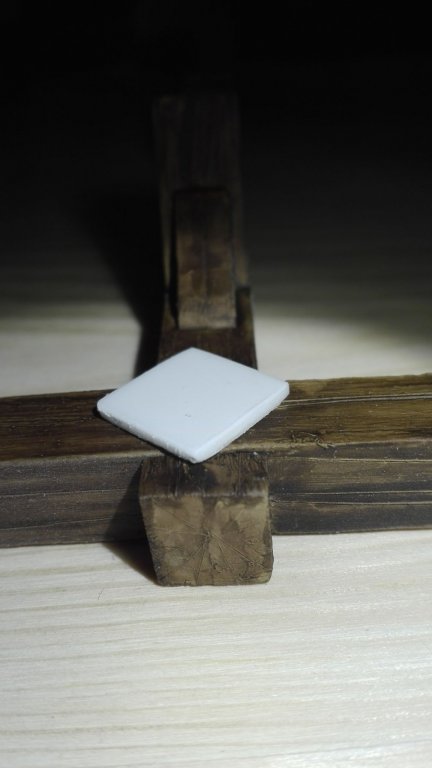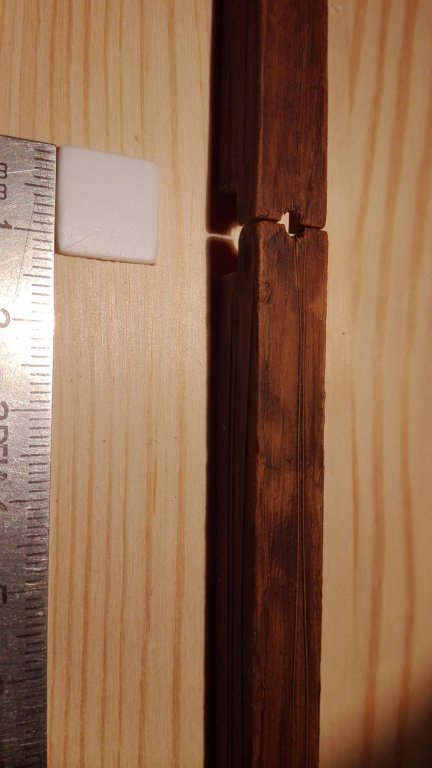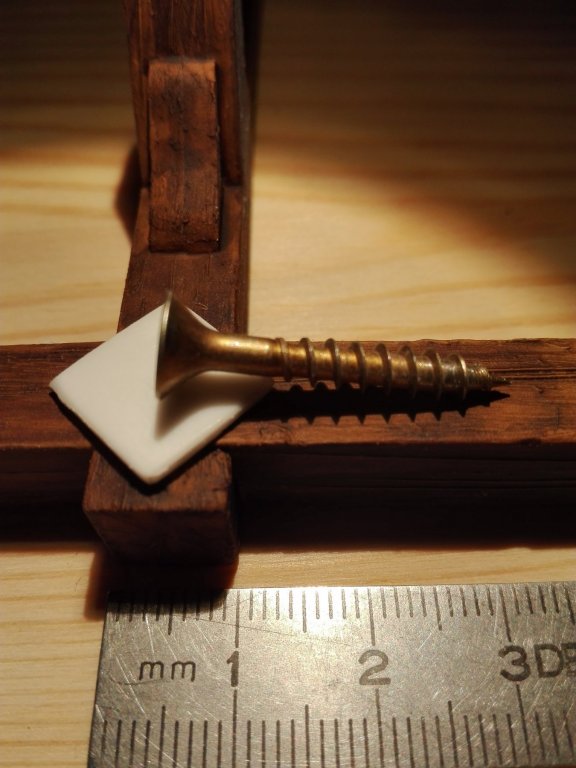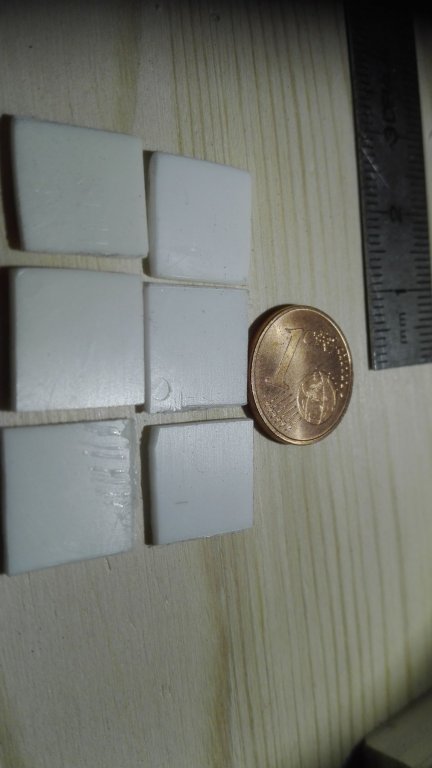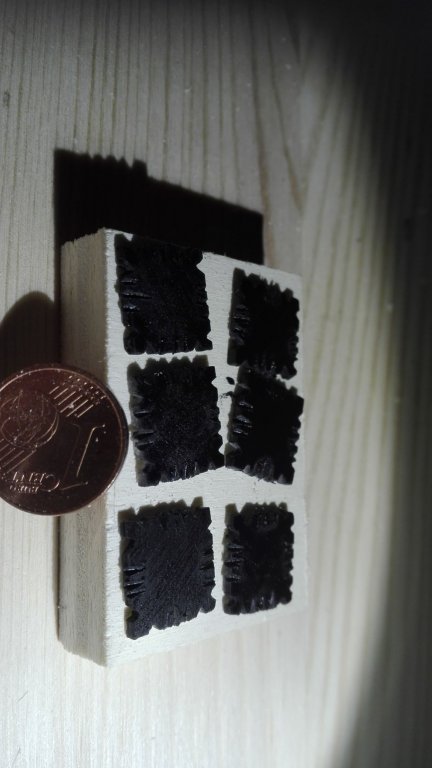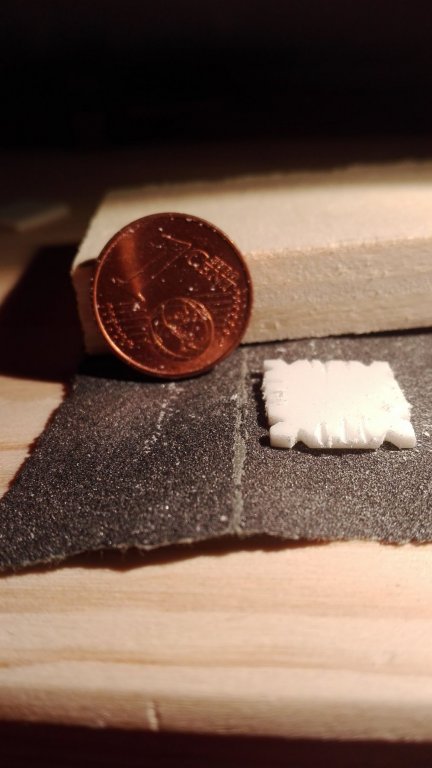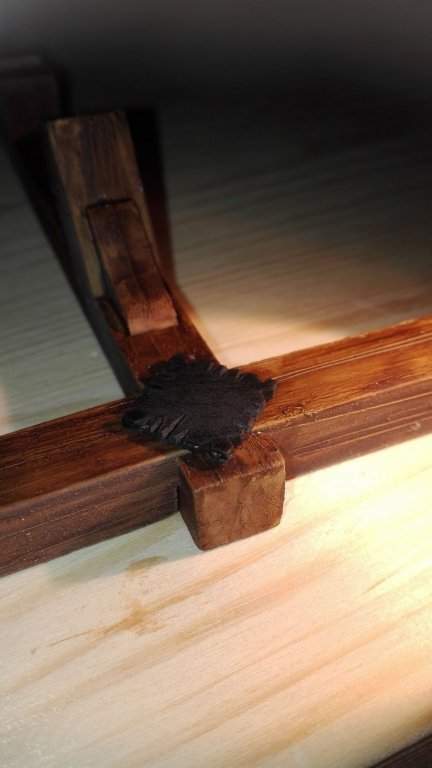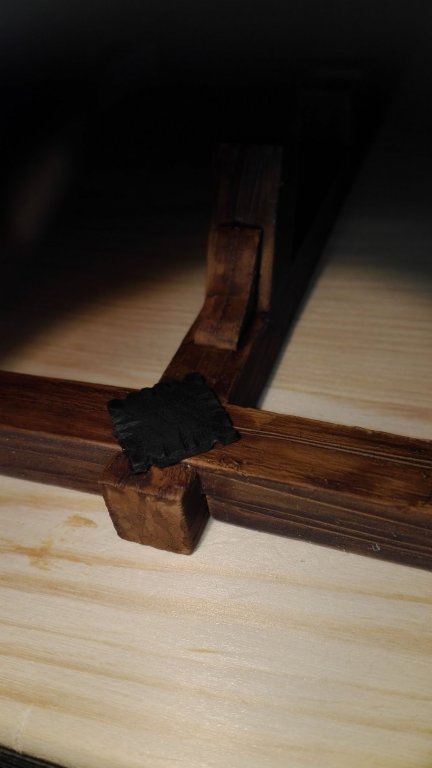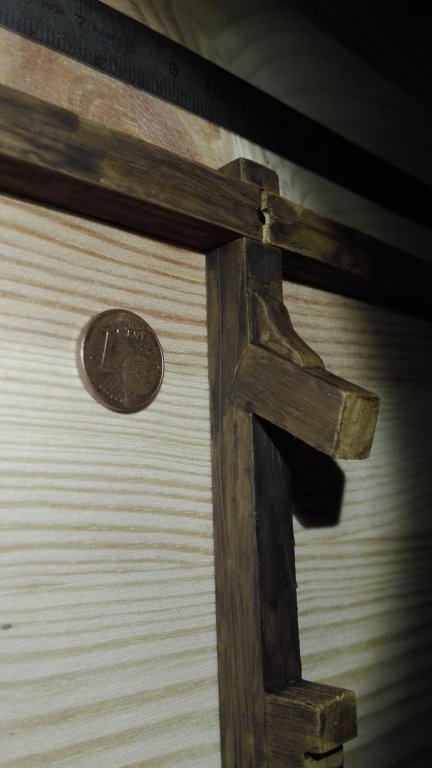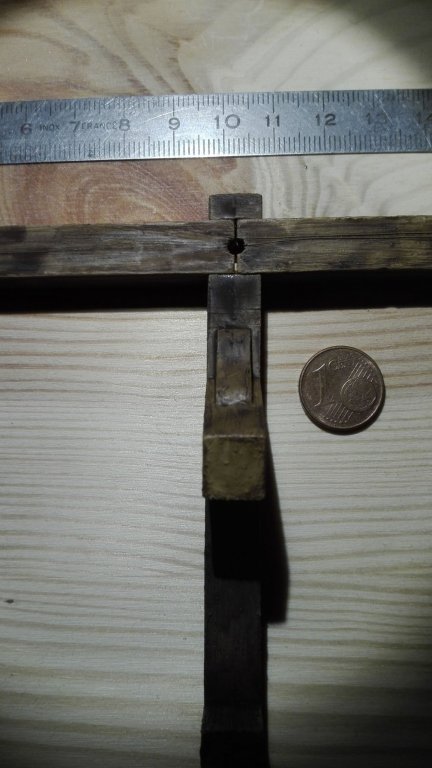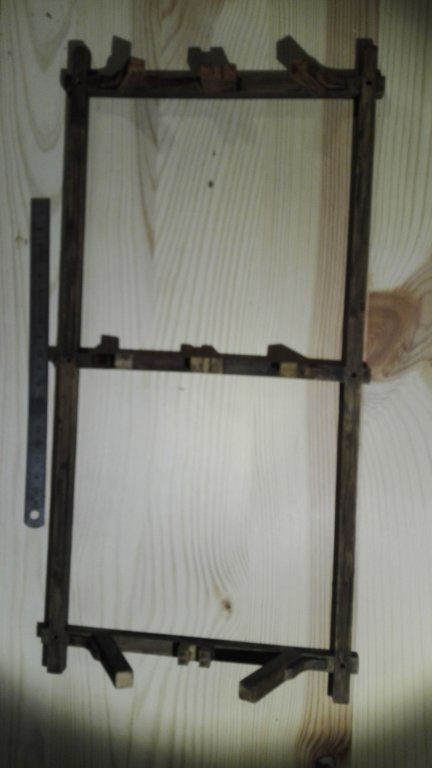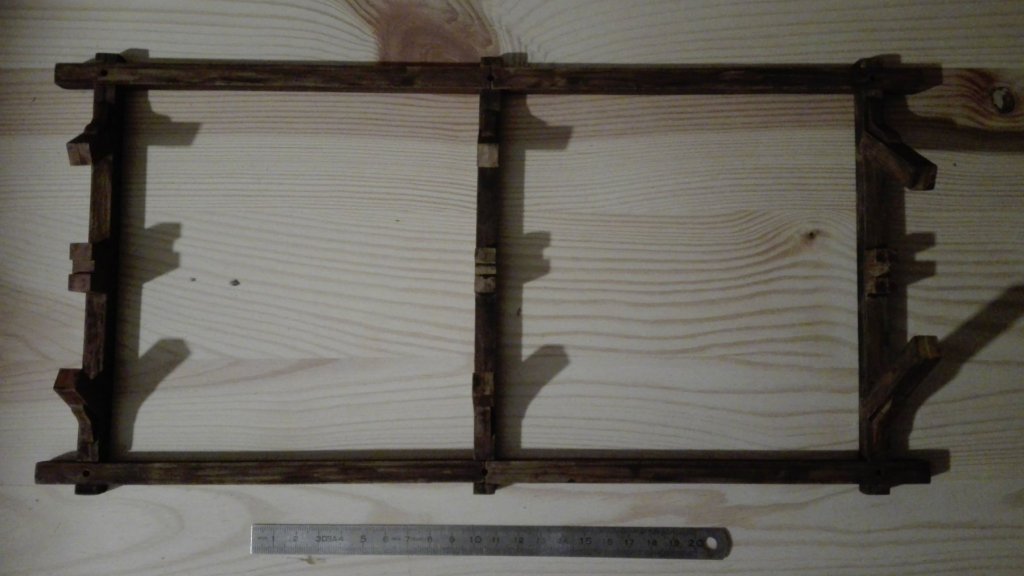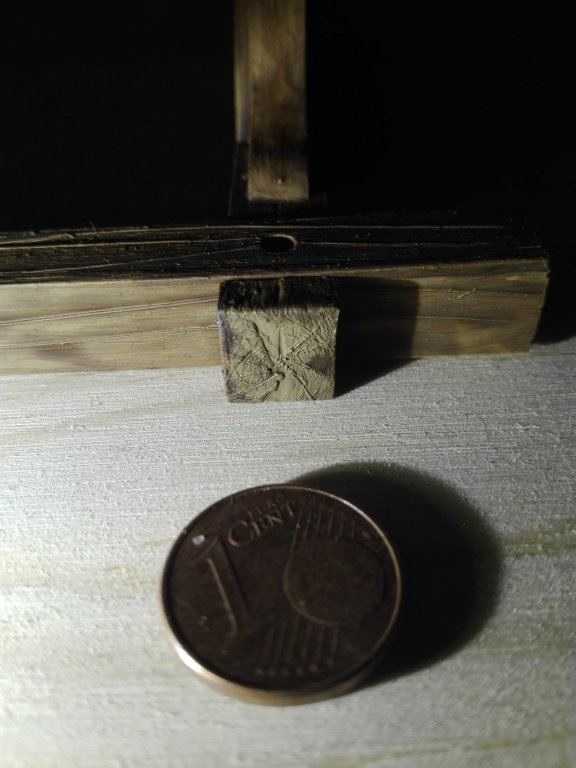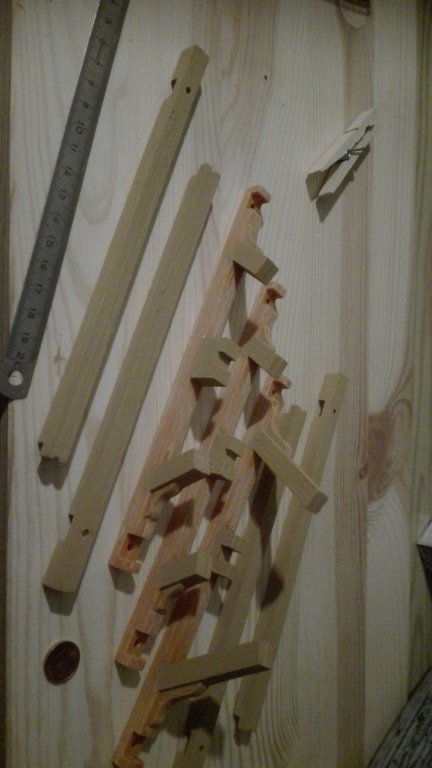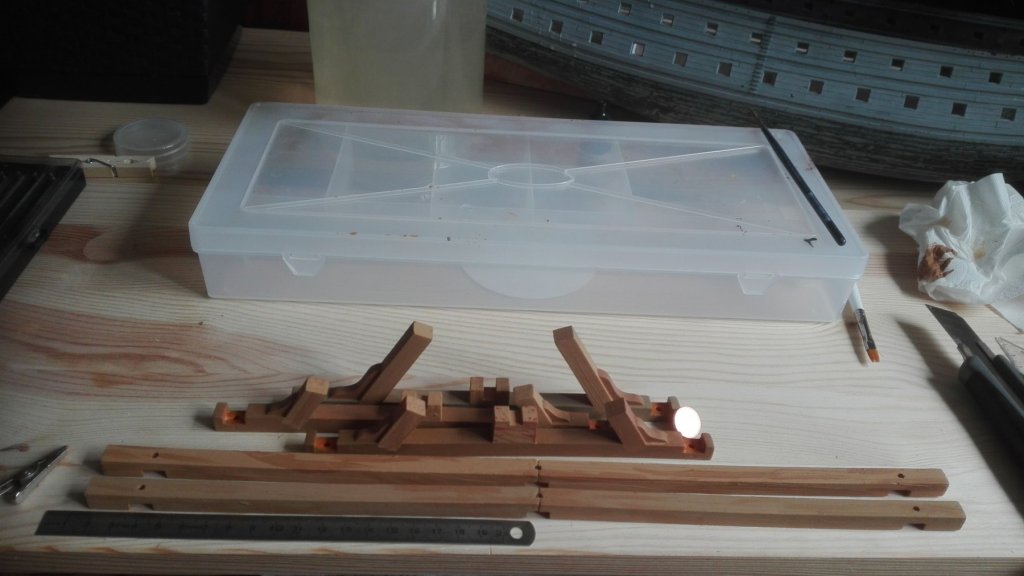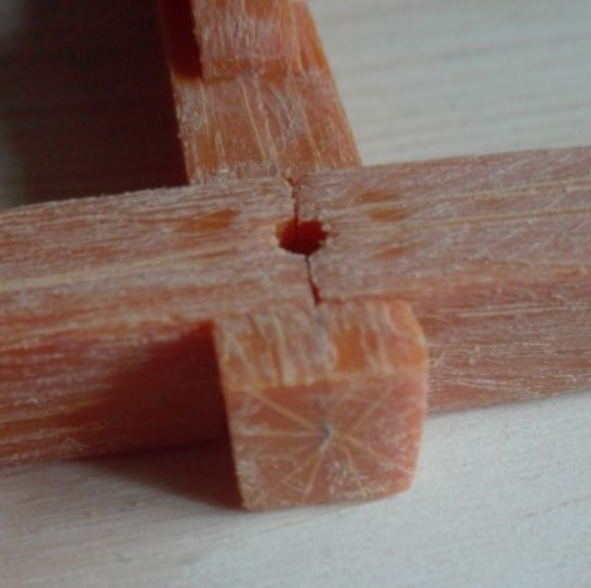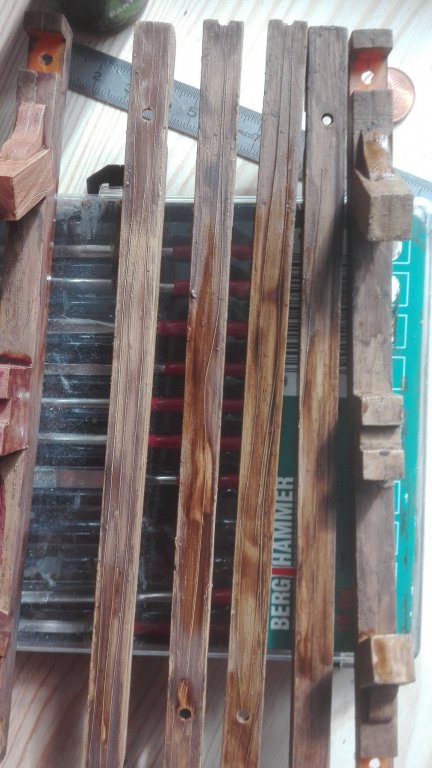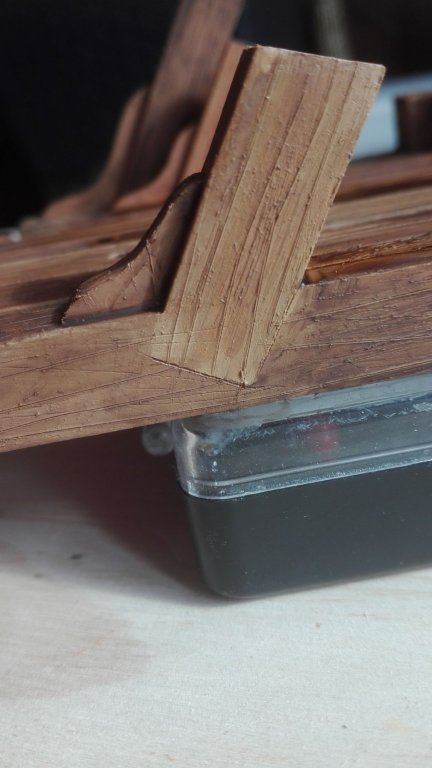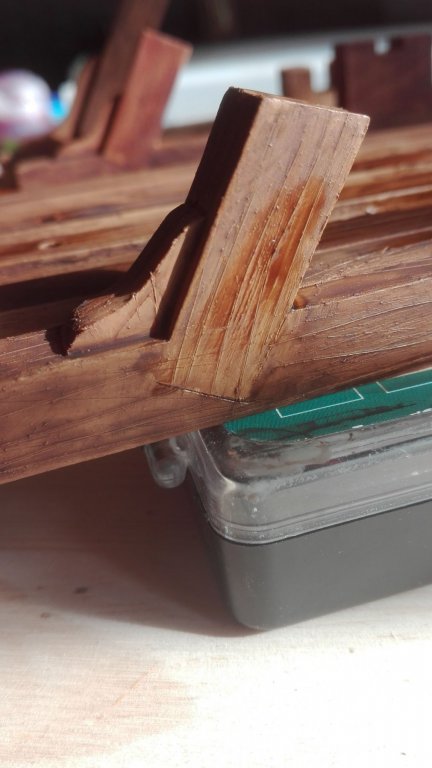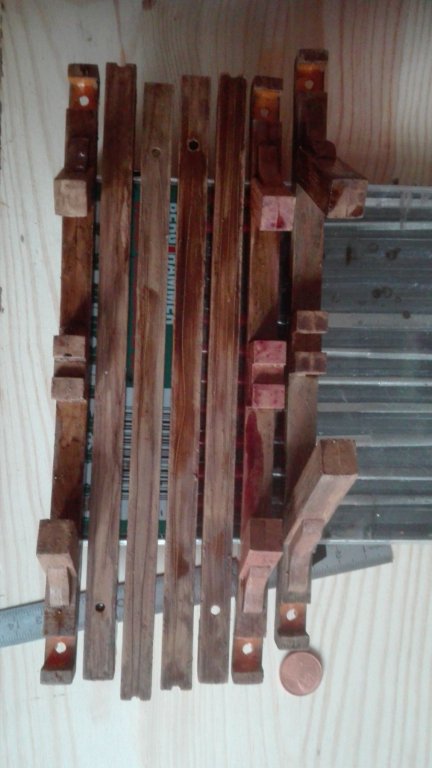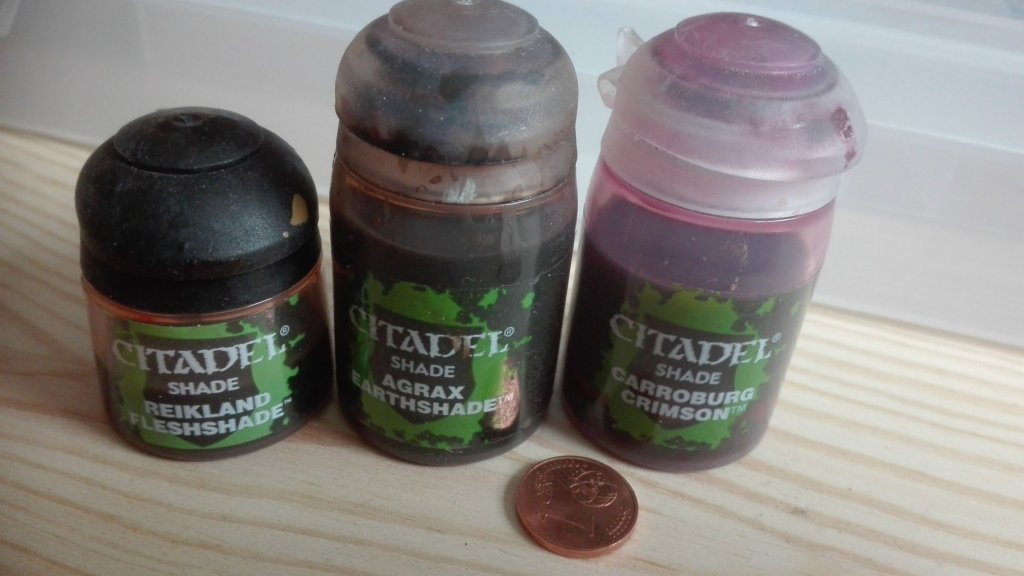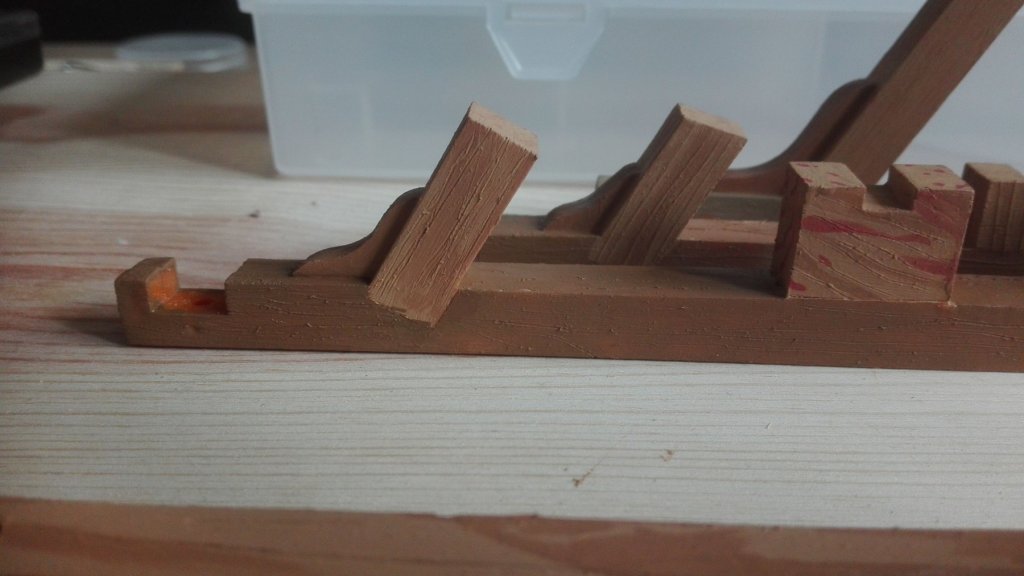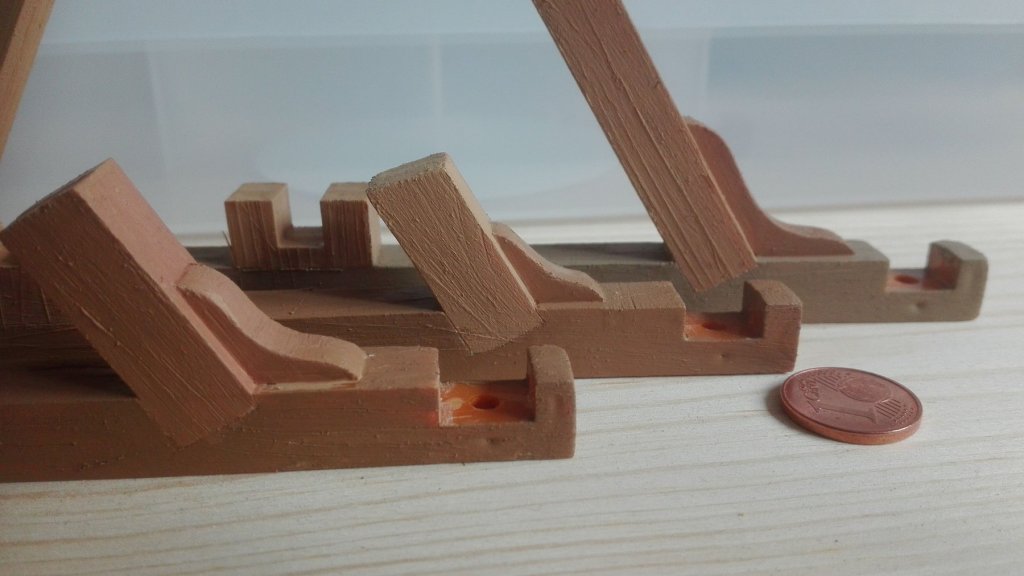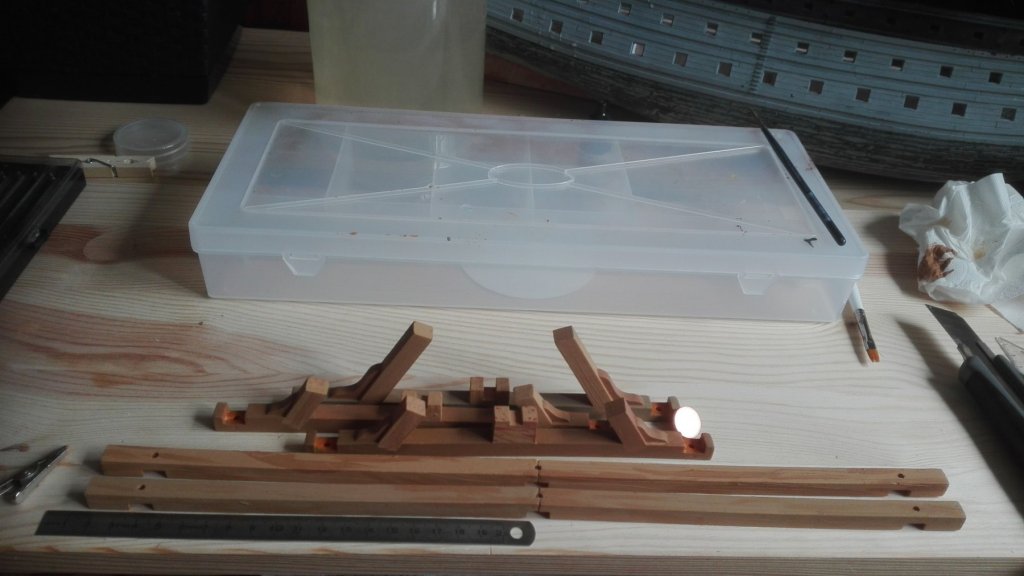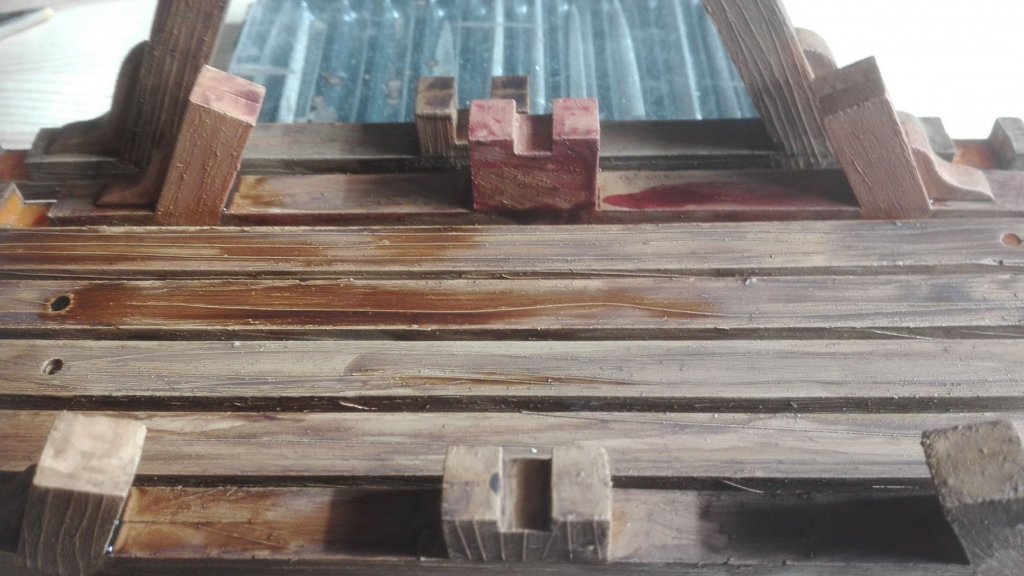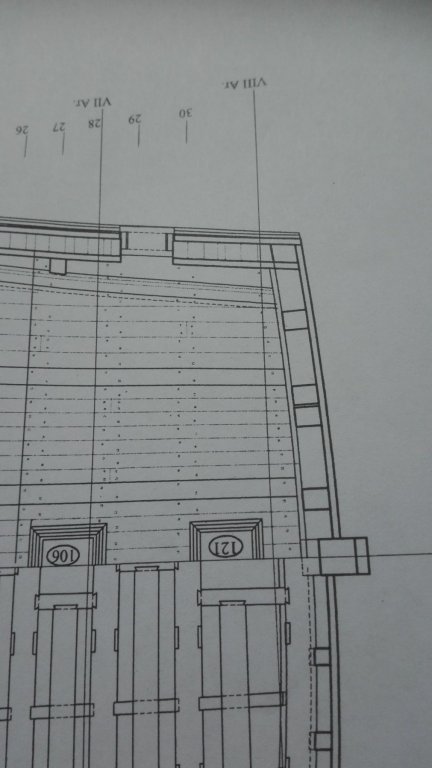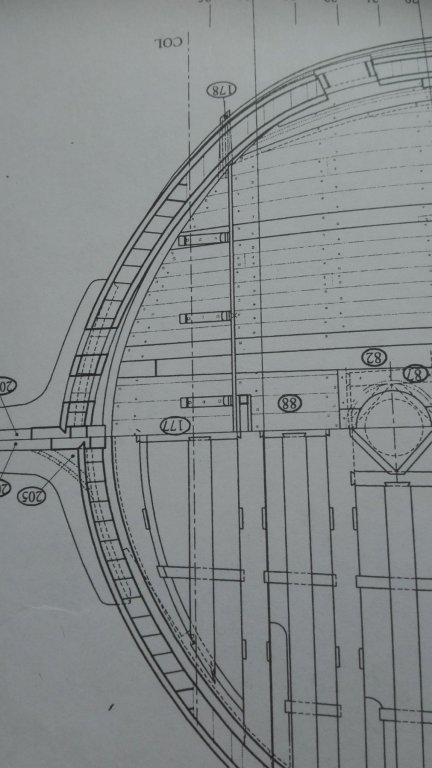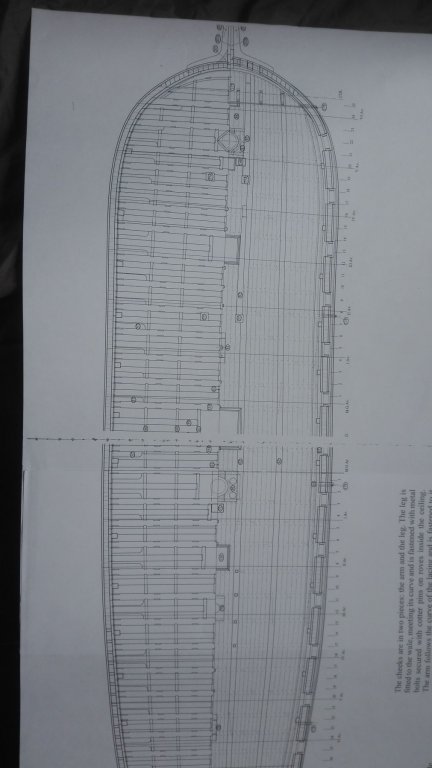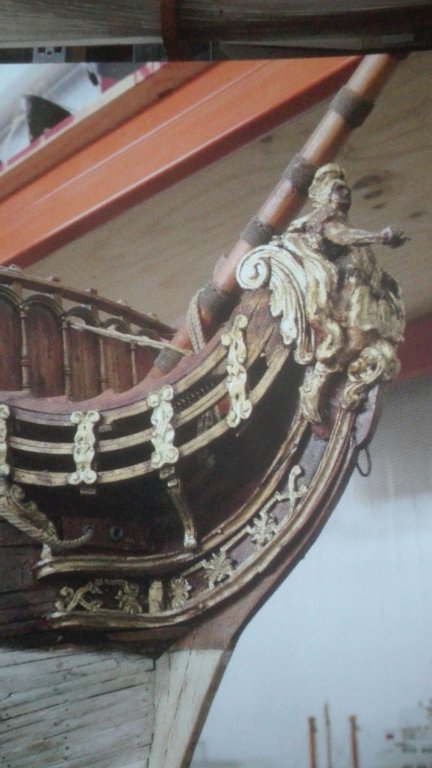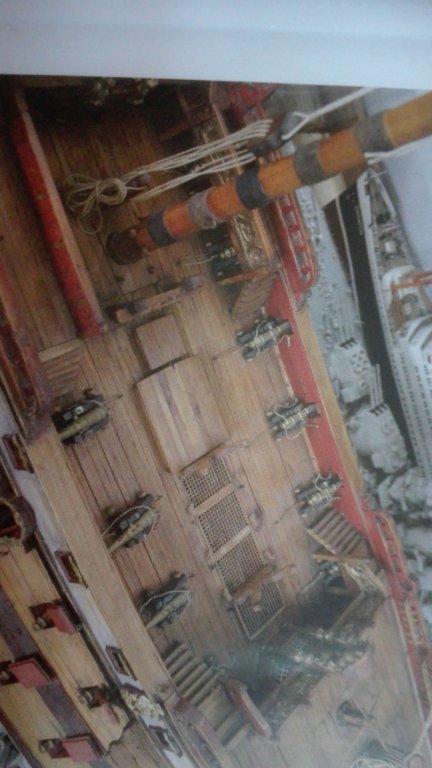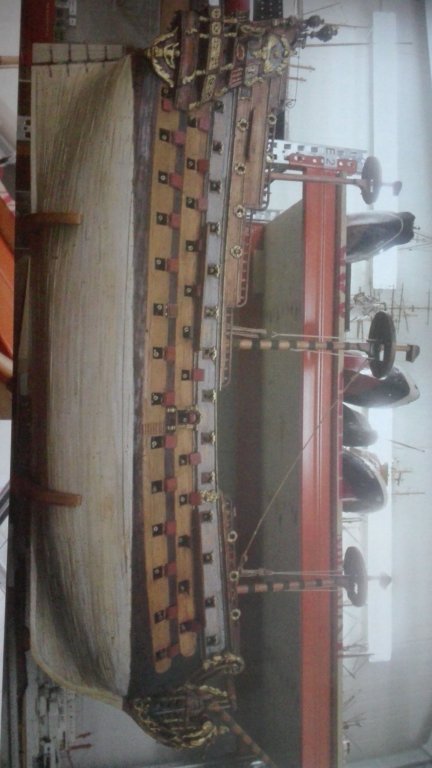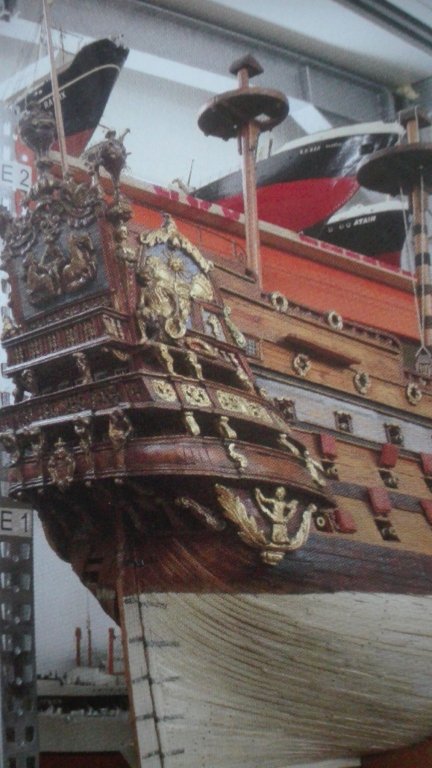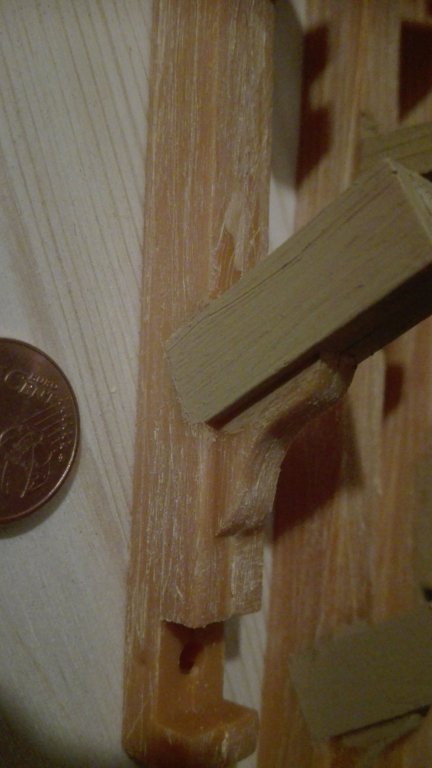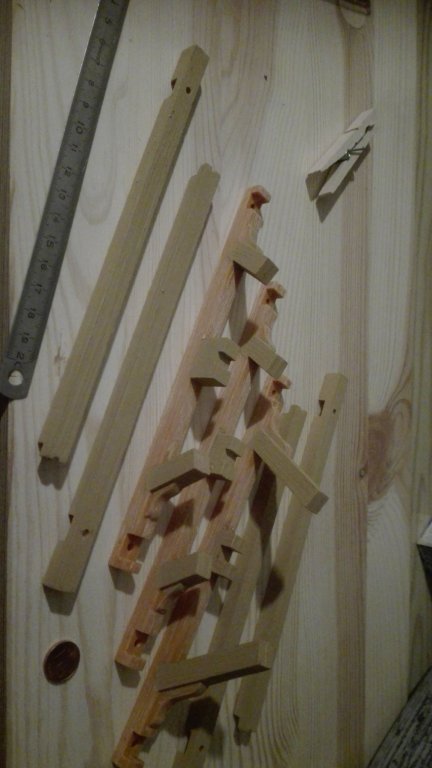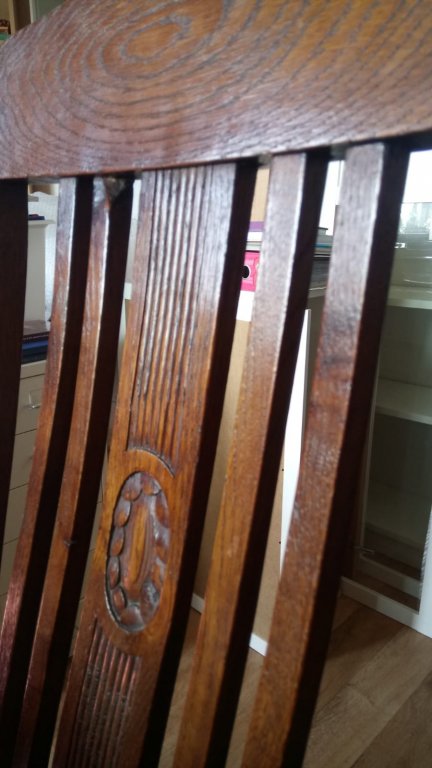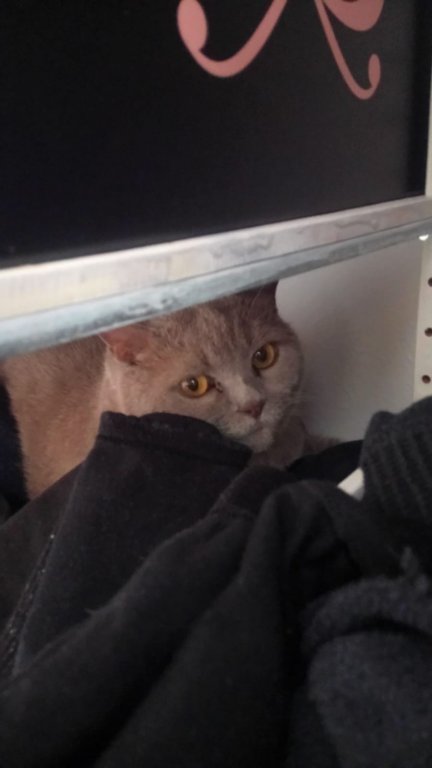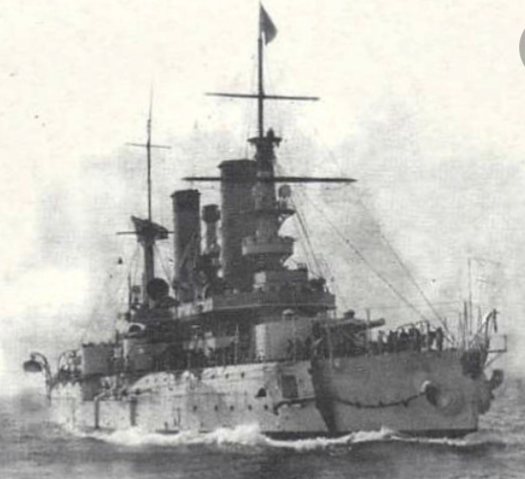-
Posts
533 -
Joined
-
Last visited
Content Type
Profiles
Forums
Gallery
Events
Everything posted by Heinrich der Seefahrer
-
My solution for the empty area beside the windows on the MD seels to be too sophisticated... Here we have got a much more simpler problem solving. "Don't overdo it!" seems to be a saying older than my grandpa...
- 244 replies
-
- heller
- soleil royal
-
(and 1 more)
Tagged with:
-
A moving of te gunports towards a shipside middle position as in the original drawing... will bring in a huge reconstruction of the lower transoms construction as the stern counter timbers (here from inside) N°21 {in both drawings} have to be removed. And as I have no otherchance than to build the transom from scratch this forces me into a reconstruction. I have to keep this in mind.
- 244 replies
-
- heller
- soleil royal
-
(and 1 more)
Tagged with:
-
Hello Daniel, creative attack on that problem. Wounderfully made parts! And to keep things easier: Cutton buds do have plastic rods that stay as a pipeline if you get them lengthened over a flame - so the drilling before is not necessary. (It is an important tip from the Wingnut Wings website due to the rigging.) Hth.
-
Thank you that is very interesting, Daniel. Interestingly on L'AURORE 1766 the hole gunport framing is painted on the hull. (Cannot shift the pic 90°) On the other hand the cravings aft are astonishing in detail and caftmanswork. Something I do not understand - why this detailing was done there and wasn't invested somewhere else? (All pictures from: G.Decacroix Corvette L'AURORE 1766 - 1775 Ancre/Paris 2000)
-
Here the incorrections in the aft decoration: Here [1] you can see six gunports - two in and four under the transom. [2] The original plan of the transom decor. The very first theme is the number of aft gunbarrels. In the lower hull aft there are two gun ports on the original drawing. On this ink of [3] TONNARANT(?) we have got two gunports,too. But they are located as the inner of a quartett and not in the way as on the [2] transom original drawing. [4] the Lamineur drawing of the side gallery [5] the original drawing of the SAINT PHILIPPE side gallery - both are quite close in similarity. But both would not match with any of both transoms. The balcony is right but the columns have disappeared! From the shodow there is a balcony - the columns rest on the handrail - but not in the sideview. ( I think I will draw something to this particular problem, as it is too complex to explain by words.) Lets start with the problems obviously in the drawing [1] compared to [2]... Here we have got four turnarounds ...and here five!!! The two shells on the outside frame are more in line by Lemineur and a 1/10 to 2/10 more out of the line within the original papers. The couronnament is (is looking?) not as high in the original drawing... as Mr.Lemineur has reconstructed it with the firugres heads not meeting the upper frame. Scale both drawing to the same scaleon transparent paper with show the problems much clearer. I want to build the SAINT PHILIPPE closer to the original drawing. This is only a simple pile of ideas and thoughts.
- 244 replies
-
- heller
- soleil royal
-
(and 1 more)
Tagged with:
-
Further colouring... I decided to braek the complete covering of the fransom in goldyellow and red by keeping some areas unpainted - as some darkbrown wood fits to both colours: By this I left all the window frames unpainted and Some in the balkony of the nameplate a blank wood frame so the transom doesn't look as heavy gold covered as on other models. I think the British design is very golden. The area between the last window and the column is very large and completly empty. I can not belief that at a transom where any squareinch is filled with decoration these two prominent places will not be used. So I tried to fill the port side with an volute. in 1/92 the lampds will be very tiny objects to build. I decided to stay away from a massiv goldyellow cornice bove, the large curonnament and layed in a red stripe to interrupt the top framing. At the breakhead bulkhead there isn't a lot I could do to come away from the large vermillion red area under the grating & fleur-de-lys change stripe. For the lower transom.I also de-golded the decoration still think about red stripes as inlays for the columns besude the name plate. The lines are dotted and so I donot know how to deal with it. Any further ideas?
- 244 replies
-
- heller
- soleil royal
-
(and 1 more)
Tagged with:
-
Hy Daniel - the cornice on the gunport lids were painted in the Vic-1st edition? Okay for the horizontal shared door I can understand as the cornice will block the doorsides to be fully opened. But usual gunport lid? I thought the cornide will be applied over the hinges du to keep the elegant lines alive. Or am I wrong coming to this idea from with my point of view of the French baroque side of shipbuilding?
-
Thanks a lot EJ_L- but the pictures I haven't posted are showing the weaknesses and at these a huge amount of work will be put in the bad sides to lift them to be right. I am really very very critic as the stand is my best area for the planking and wales work later on... and it is not scaled 1/92 it is something around 1/24 to 1/36 as I guess. Whit my SAINT PHILIPPE I had some minutes to colour the plans further on. Step 1 Step 2 By this I can show my mother (who presented the kit last Christmas some progress without risking to damage the model on transport. I. The planking of the Lower Gundeck (36 pounder) is my very next partproject. And so I tryed a more serious look onto the planks. By colouring them I figured out there is one plank ending in a very sharp top. The second (brown) plank under the gun between the waterway (red) and the midship plangk (light yellow).Additively to the coloured planks I placed an extra doodling to show the case on the plan...* A very strange and astonishing thing to see!!! Can this be right? Or am I too close to RN-shipbuilding standards of the Georgian Era and baroque planking allowed such ends also they were avoided in the hull planking? II. By this I recognized that the wales joins change from hook on the first four (from CWL upwards) to simply diagonal in the last two wales on the Upper Deck. I simply marked the suspicious wales grey... I have had the idea this might be due to the lighter frames on the upper end or is this an error in the plan. ("Always you have to be highly sceptical to noncontemporary plans - and even these are sometimes questionabe!" W.Mondfeld) _____ *Due to my bad brain forgetting anything that wasn't written down.
- 244 replies
-
- heller
- soleil royal
-
(and 1 more)
Tagged with:
-
I had some time this afternoon to try some rough colouring sheme on a test scale copy to get a first look. I kept the underwaterpart of the lowest wale white and think about a light bar (0,3 x 0,1mm) to seperate the underwater lead white paint from the upper hull. Is this right or was it first introduced with the upcoming of coppered underwater hulls? The wales will get a darkerbrown as the stand is, the red will be more vermillion and the yellow/gold is not applied till now. - the complex to draw grating also. I have got no odea how to paint the imitated windows. I think about a - framed mirrors (closest to glas) - some kind of a mixture of verdigris and lead white under clear gloss varnish. - metallic lead as framed plates - black with white dots as imitated refections - green as imitational clour of glas at contemporary shipmodels - something completely different What is the specialists idea?
- 244 replies
-
- heller
- soleil royal
-
(and 1 more)
Tagged with:
-
Hello Glenn, this kit is in my collection, too. So your work with the kit is highly interesting - in particular your view on MacGregor (standing in my shelf beside "Tea Clippers". I have got the Hovard I. Chapelle book "Search for Speed under Sail" choosen as my reference - but since the baroque ships came across my way everything else stood still. So I look foreward to push the AL-kit in the Spontaneous Ship Project slot later on. Thanks for your interesting information und informative illustration.
-
The washers size is changed up to 12mm x 12mm a bit less than 1/2inch to 1/2inch here the first sketch to try out the size and get some idea about the dimension of washer and screw. Here the six squareplates cut out. Twelve grooves and eight cuts added by a key file Sprayed with a first matt black layer out of the can. Not as good as thought I would be able to file them - the washers in black look more handcrafed than I estimated they may do. Here N°1 in place covering and camouflaging the gap between the two bar ends.
- 244 replies
-
- heller
- soleil royal
-
(and 1 more)
Tagged with:
-
Tomorrow I'll add a pile of better pictures by day light. Edit: Sorry to say that... But daylight doesn't make it, too.
- 244 replies
-
- heller
- soleil royal
-
(and 1 more)
Tagged with:
-
Hello friends of the SAINT PHILIPPE, the brown ink from Citardel is now ready to be covert by varnish. Here the critical joining of the longest bar. Here the hole construction ready. Here the end-grain looking as rough as possible.
- 244 replies
-
- heller
- soleil royal
-
(and 1 more)
Tagged with:
-
Hy Henrik, Nelson's Favorite .. . and you are nearly ready wirh the basic hull. Congratulations! What books, drawings and so on are you going to use to refine the kit and referee to? She is a historically importand ship - so she is worth the work. Can you kindly add some ruler (or a coin, etc. Commen to everybody) from time to time beside or on the kit due to show the size if the kit to us? Here my way to do so. Looking over your shoulder very interested.
-
I can today onlyplan the forhe iron washers - as my mother is laying in sickbed the hole day has transformed into (feeling) two hours. I am adding the first scetch to the iron Washer, Stand - their diagonal is the breadth of the bars top some 10mm. I do need them twice for the join of the long bars to hide the gap - the other four washers are there to keep the criossings and fixingpoints equally. _______________ Edit: This stroke effected my center of remembering so here the important picture of the gap that should be hidden I forgot. Sorry for this.
- 244 replies
-
- heller
- soleil royal
-
(and 1 more)
Tagged with:
-
Thanks Marc, so the days and days of monotonic sanding in some pattern 60grain paper, than scratching in the borders between the different pices of "orangetreewood" and at the third step using a sharp file to press in the lines have made their job at least... 😴 Tomorrow I'll have to attatch a last and very last layer of ink - and then a clear matt spraying code out of the can plus adding some soft material to seperate the plastic from the hull.. I dont think I will be able to get my washers ready that I plan to add on any fixingpint to hide the middele gap between th elongitudenal two pieced bar. You can see it in #169 in the first picture very well. I'll show the problem to you tomorrow, too.
- 244 replies
-
- heller
- soleil royal
-
(and 1 more)
Tagged with:
-
Here a bar joiner the darker shall dry so I can after this paint the lighter again in a lightly changed brownish redish shape. With the time it comes more and more... ...layer by layer to that dark brown I want to have.
- 244 replies
-
- heller
- soleil royal
-
(and 1 more)
Tagged with:
-
Praise the orangewoodtree for being the humbelest coloured wood on earth, my friends! Here the second layer of paint. Ocker matt 88 from Revell Dark Earth matt 82 from Revell Both mixed together and som times a bit of this tree Citardell inks was added to change the basic colour below the later ink layers a bit more. It is not dry at all but starts to look like wood. Invest of time 3,5 hours it could be worse
- 244 replies
-
- heller
- soleil royal
-
(and 1 more)
Tagged with:
-
Hy Marc, that sounds like and wellplanned step-by-step progress. As I think of relocating the masts I'll turn the plasticdecks upsidedown and gluing a new planking (0.5mm) on them so the ugly plasticplanking of an nearly English planking style is off the decks; and when the decks are completly French planked I can redrill the mastholes where I do need them. And as the masts can be seen throughout the gunports (painted white*) I have to move them a bit. In case of you will use a set of SR-Heller yards and masts - I can send it to you as for my hull modell they are a only some surplus. Before buying some expensive 2-compoment - glue why not trying out the Australien idea of Woolworth supeglue and WallMart bakingpowder? Or for even more powerfull connections mixing small or not so small sand and superglue - it fits in all the grooves and FBI division of Behaviorism says it deals like concrete. No it is really so hard that it is used in oltimer "lost tin by rust" restauration, too. ______________ *as far as I remember from the SOYAL LOUIS monography by Commisair Hayet ~1670.
- 2,695 replies
-
- heller
- soleil royal
-
(and 9 more)
Tagged with:
-
One question are you going to build in the decks before glueing the hullhalf to eachother finaly? Or what is your way to build?
- 2,695 replies
-
- heller
- soleil royal
-
(and 9 more)
Tagged with:
-
Thanks a lot , Cederic! Now my hull was bent a bit by the foam to get the inner shape - the decks donot fit in perfectly - but this may be an usual kitproblem at all. Do you know anything about this? So I am highly sceptical to the stiffness of the hull. I want to get the 36pounder deck in before I do start to re-wale and than re-plank the hull due yo stabity.
- 244 replies
-
- heller
- soleil royal
-
(and 1 more)
Tagged with:
-
Dear Marc! In our German periodica of the workinggroup historical shipbuilding LOGBUCH 1/2018 there was an article I about the SOLEI ROYAL (and some lines about some ROYAL LOUIS) large scale model resting in the German Maritime Museums archiv and the search for a modelbuilder to restaurate this pre 1924 dated model. Interestingly the figurehead is there (not the decisions of a not-to-be-built as in Paris) and it looks like a portrait of the sunking in a fighting position as a classical Roman officer or emporer - known from the Chapman drawings (as far as I do remember). So the ancientiational aspect is there on both ends of the ship in the couronnament he is shown as Apollo correspondingly. One funny feature are the stairs do leading the officers to jump over the guns barrel fourth a time. And a stairway leading the sunking towards a side entrance and not to an usual gunport - squeezing his highborn and round baroqual body through the squarilateral. The model isn't obviously not to our today standards of modelbuilding as there are no boxes for canon balls, the guns rigging is a pitty. (To me personally it looks like a model started with a huge amount of money and time and then ended in a hurry without money.) But the CLW looks right halving the lowest wale. But as you can see for a minimally 95 year old lady she is in some astonishing fit condition . From her monumental scale and appearence I would date her into the German Empire before the First World War for her begin (but there are some doubts to her finishing). Scale (ca.) 1/25 Length o.a. 2368mm Length iof the hull 2158mm Breadth o.a. 556mm Height with stand 1225mm Height if hull with lower masts 1144mm. It is an impressive model (as ROYAL LOUIS has to be from the same hand) and the museums workshops were looking also for somebody skilled to be the restaurateur. (Half a year ago but the vacation may still be there. ) What I really do like is the lightness of the decoration and the wounderfull blue. I hope you have some help from this model. As I have left the article at home I think Leo Reiffenstein (1856-1924) was the name and dates of the modelbuilder - due to this the dating troubles. What I do miss is the decorational grit from the last wale upwards and the characteristic decorational elements between the 18pounder gunports tier. So due to the war conditions or later on the unforgiving pressure of reparation payings* the detailling work was abadoned and the model ended in some simplified conditions? It doesn't look like harmed by the bombings to Northern Germany from 1942 onwards there are no shadows of differend fading of the varnish of the grit being teared off or holes of the nails to fix it - as far as I can see. So the model is not your detailing decorational standard but I hope it helps a bit. Best wishes from.my way towards work in tube, yours HdS _______ *I am sceptical to a later time when we ate plug beet for months, handed over 144000 (onehundetandfoutyfour thousand) milk cows to the war winnes fullfilling the articles in the Versailles Treaty - getting the highest rate of death children in the hole world. This is even in Germany very unknown today and the German man that was picked out to sign the mortifying paper** did it with glooves, pulled them of and let them rest there together with his pen. **This treaty was one of the the first important international treaties signed by the young republic - and some idiots still ask me in a discussion some days ago "Why democracy wasn't a success after 1919 here in Germany?"
- 2,695 replies
-
- heller
- soleil royal
-
(and 9 more)
Tagged with:
-
Hello and welcome back Cederic! Russian battleships?* Okay promotion allways meets more money and responsibility with much more work and much more taxes. Broken fingers are an disgusting thing - sorry to hear about. La REYNE is a very ambitious project and I think if we base on a given hull we have to live with some uncomfortable features. So I know I should Move the wales a bit at last three gunports but why should I risk the hole project by weaken the plastic hull for a little group of small irregularities? All I do with the 1/92 Heller hulls are etudes - fingertrainings for a scratchbuild of a ship in some 10 to 15 years... So I do take it seriously - but in my technical education I learnt to use tolerances. I may file a bit of a wale away and add some polysterol sheet on the other side - but I have to keep away from too radical plastic surgery. Your way was astonishing radical and straight to the goal. I am a much more shyer person than you it seem to me. So I today did some progress with my stand by painting it with an acrylic brush. So the wooden structure craved in by knife and a fine file top was added by the ductus of the brushes hairs. Here the joiner of bare sanded and manipulated plastic with the overpainted support to show the effectively done job of covering the "orangetreewood". Otherwise It will hapen the orange will come to see. This over here is the backrest of our diningroom chairs. My target is to imitate this warm red brown oak effect. So I will add some redbrown ink and some kind of covering varnish to come to a similar warm feeling looking at the stand. I also managed by this to imitate the grain of the wood. The colour I use is simply the Revell N°88 matt acrylic "Ocker". And by this we have to wait what it will look like tomorrow in the first day's light. ______ *I can understand fully why - I love the PETROPAVLOVSK class they were so beautiful battleships. I build all of them 25years ago for the WTJ tabletop game "Battlefleet 1900" in 1/780 but never found anybody to play with me...
- 244 replies
-
- heller
- soleil royal
-
(and 1 more)
Tagged with:
About us
Modelshipworld - Advancing Ship Modeling through Research
SSL Secured
Your security is important for us so this Website is SSL-Secured
NRG Mailing Address
Nautical Research Guild
237 South Lincoln Street
Westmont IL, 60559-1917
Model Ship World ® and the MSW logo are Registered Trademarks, and belong to the Nautical Research Guild (United States Patent and Trademark Office: No. 6,929,264 & No. 6,929,274, registered Dec. 20, 2022)
Helpful Links
About the NRG
If you enjoy building ship models that are historically accurate as well as beautiful, then The Nautical Research Guild (NRG) is just right for you.
The Guild is a non-profit educational organization whose mission is to “Advance Ship Modeling Through Research”. We provide support to our members in their efforts to raise the quality of their model ships.
The Nautical Research Guild has published our world-renowned quarterly magazine, The Nautical Research Journal, since 1955. The pages of the Journal are full of articles by accomplished ship modelers who show you how they create those exquisite details on their models, and by maritime historians who show you the correct details to build. The Journal is available in both print and digital editions. Go to the NRG web site (www.thenrg.org) to download a complimentary digital copy of the Journal. The NRG also publishes plan sets, books and compilations of back issues of the Journal and the former Ships in Scale and Model Ship Builder magazines.


